12 September, 2002
9/12/02
SNOW!!!!
We woke up this morning to heavy fog and snow flurries. There is not really
much accumulation of snow, but the light dusting was just enough to remind me
of where I am and just how unpredictable the weather here can be. With
visibility so poor, we were forced to change our plans for the day. We had
originally planned to search for beetles and other insects along the Atigun
River. Hoping the fog would lift by afternoon, we switched over to some
remaining lab work for the morning. We had some survival studies to finish
with the beetles we already had and we still had several samples of hemolymph
that we needed to check for freezing and melting points. Unfortunately, both
lab tasks require a lot of sitting and waiting so the morning seemed to drag
on a bit. When you get used to spending the better part of the day out and
about collecting insects,
A morning being confined to lab work seems a little tedious. Our hope is that
we can get the remaining tasks in the lab done and spend the next few days
collecting.
The morning lab tasks included a procedure for determining the melting and
freezing points of the insect's hemolymph (blood). The sample is collected in
a small capillary tube, sealed and then spun in a centrifuge to pull any fat
bodies or parcticulates to one end of the sample. The sample is then placed
into a chamber containing very cold alcohol. The researcher's task is to
continuously monitor the sample, watching for the formation of an ice
crystal. The formation and growth of the ice crystal signifies the freezing
point of the sample. Once the sample has completely frozen, the alcohol in
the chamber is slowly warmed and the tube is watched to see when the sample
begins to melt. In any normal sample of a material, the freezing point and
melting point are at the same temperature. In insects with AFP's (antifreeze
proteins) however, the sample will have a different freezing and melting
point. The difference between the two points can often indicate the amount of
AFP activity in the insect.
As we had hoped, the weather began to clear somewhat after lunch. It did not
clear enough for us to explore the area around the Atigun River, but it did
clear enough for us to make a hike around Toolik Lake itself to search for
beetles. In fact, we located one area that had a very large population of
Click Beetles. Since we already had more than 200 Click Beetles in the lab,
we marked the site for later collection. We spent a good part of the
afternoon making our site survey and we returned to camp early enough to
nearly finish the lab work begun in the morning. The remaining few tasks are
being completed after dinner this evening. Though it began questionably with
poor weather, the day actually turned out to be very productive. Our success
today should allow is to try the Atigun River trek again tomorrow. Weather
permitting.
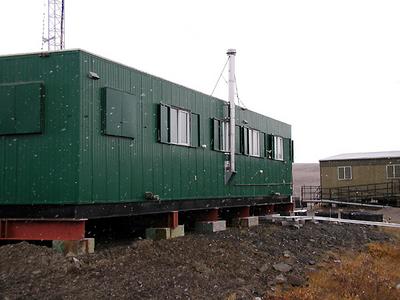
This a photo of our lab trailer. All of those white specs in the foreground are snowflakes.

The snowflakes all seemed to be an absolutely perfect snowflake shape. You can see the outline of their shapes against my jacket sleeve.

This is a photo through the microscope of the hemolymph in a tube before freezing. If you look carefully, you can see an ice crystal just beginning to form in the lower left of the tube.
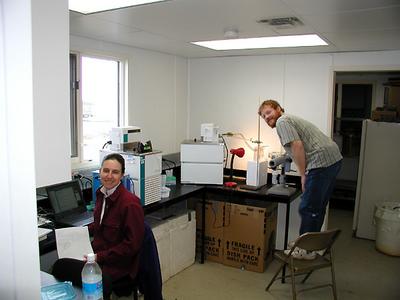
This is our lab from the inside. Val is working with data and Todd is measuring freezing and melting points of hemolymph.

This is the same hemolymph after freezing. You can see how the contents of the tube have become opaque.

On our walk around the lake, we oonce again had to navigate the spongy tundra plants. You can see how deeply my foot sinks into the groundcover.
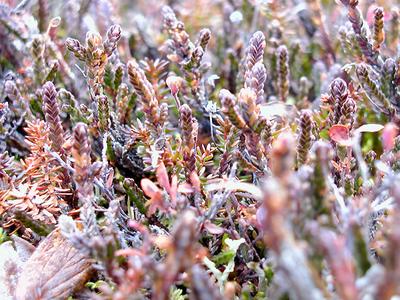
Since the cover plants are such an integral part of the tundra, I tried to get you as close to the plants as possible with the photographs. This and the next photos are of typical tundra flora.
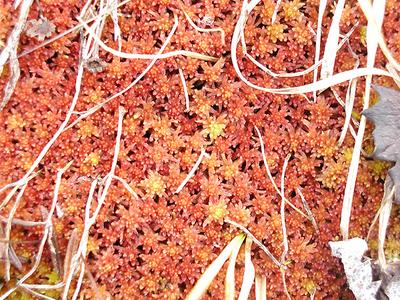
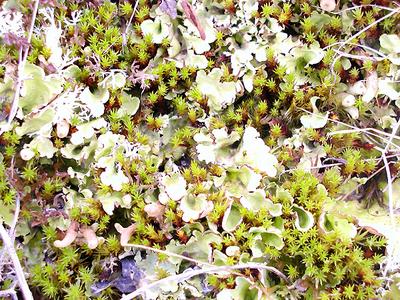
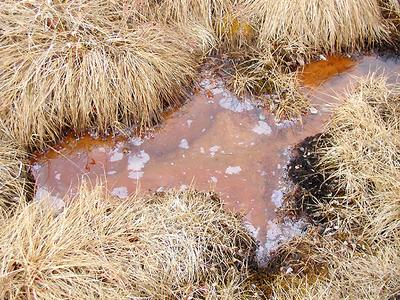
Even in remote areas of the tundra, we can sometimes see the evidence of man's presence. This oil is floating on the surface of a tundra pothole. Where it came from is anyone's guess.
Contact the TEA in the field at
.
If you cannot connect through your browser, copy the
TEA's e-mail address in the "To:" line of
your favorite e-mail package.
|
